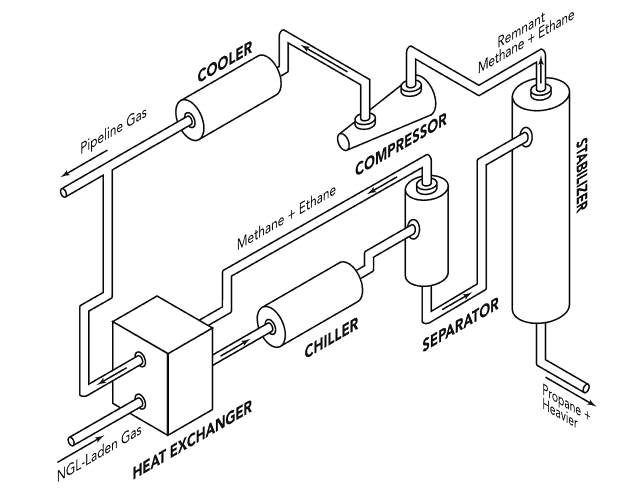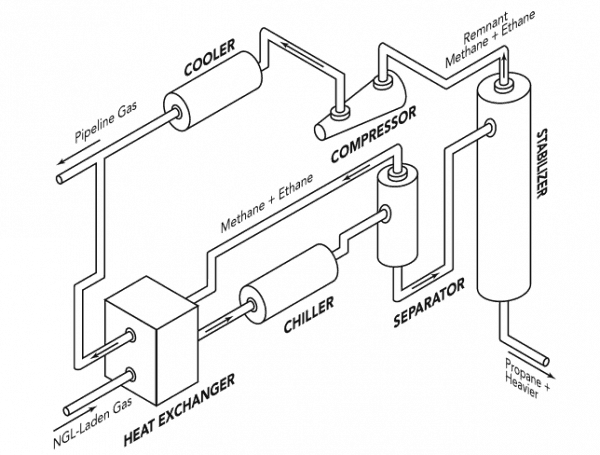What do you think of when you hear the phrase, refrigeration plant? There is no right or wrong answer. I guess the answer really depends on what industry is in the context. Refrigeration plants come in all different shapes and sizes.
There are some small enough to fit in a box of wine to ones sized to cool the indoor ski slop that is located in Dubai. The size and configuration just depends on the needs of the application.
Let’s focus on the oil and gas industry and how refrigeration plants are used for applications throughout the industry.
Natural Gas Refrigeration Plants:
When it comes to natural gas, refrigeration plants can be very lucrative pieces of equipment. You may already know this, but when natural gas is cooled to approximately -162 F it will change to a liquid form called natural gas liquids (NGL’s). When natural gas is in a liquid form it is easier to transport through pipelines and freight. So then it can be sold and marketed and help companies gain revenue. But I have skipped a major step. Before natural gas can be refrigerated it needs to be treated.
Companies can invest in skid mounted refrigeration systems that will cool or refrigerate gas to the point it becomes a liquid and can be stored for transport. William L.Leffler, Natural Gas Liquids:A Nontechnical Guide gives this explanation:

“These facilities take advantage of the propane and sometimes ethane as refrigerants. Just like the Freon in an old home air conditioner, ethane and propane can be compressed, causing it to condense into a liquid state. It is then autorefrigerated by release of the pressure, often termed throttling. This ‘flash’ autorefrigeration step drops the temperature precipitously to -10F to -35F as some of the liquid vaporizes. The resulting cold gas/liquid mixture is separated. The cold liquid refrigerant stream cools and most of the heavier NGL-laden natural gas stream, causing much of the propane and most of the heavier NGL’s to liquefy and drop out. The liquid refrigerant vaporizes in the process and joins the other refrigerant vapor stream to be compressed and liquefied to start the cycle again.”
How to TREAt gas BEfore refrigeration:

Units like CROFT’s Gas Sweetening System (GSS), Chemical Injection System (CIS), Fuel-Gas Conditioning System (FCS) or Passive Dehydration System (PDS) can handle the treatment listed in the graph above. The next step to capturing the money-making natural gas liquids is the cool part, pun intended refrigeration.
Now again, there is something different companies can go. They can combine a Joule Thomson System (JTS) with a refrigeration plant to get the gas even colder to get more liquids. Of course this comes at a price. Companies can even leave the refrigeration off all together and just use a JTS for capturing the NGL’s. How do you ask?
Gas enters the JTS and travels through a series of heat exchangers that pre-cool the gas. The gas then passes through the JT valve, taking a pressure drop and further cooling the gas. The liquid fallout, after the JT valve, is collected in the cold separator and is sent to storage tanks. The cold gas then travels back through the heat exchanger and exits the JTS.
So once an oil and gas company decides they want to begin capturing natural gas liquids, they have options. It really comes down to what their ultimate goal is and how much they are willing to put forth in capital to get that goal.












